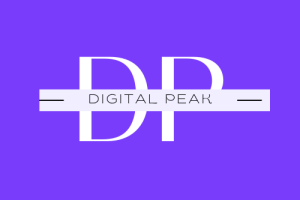What is Google Ads?
Google Ads, formerly known as Google AdWords, is a bid-based online advertising platform that includes text format search engine ads, video ads, banner ads, YouTube ads, and other display options. Google Ads appear across Google search results and millions of Google partner websites.
Google Ads is the largest digital ad publisher in the United States, accounting for 28.4% of all ad revenue.
How do Google ads work?
You write an ad, place a bid, wait, and sales roll in. That’s basically it… with a few small caveats.
I’ll cover how to create a Google Ads campaign in step-by-step detail later, but essentially, Google Ads works on a pay-per-action pricing model, usually calculated as cost-per-click (CPC). That means you pay a certain price every time a user clicks on your ad, or whatever your goal action is.
That price changes often and depends on multiple factors, including how many other brands are currently targeting that keyword, search volume, expected reach, time of day or year, and more.
When you place your ad, you specify your “maximum bid” — the most you’re willing to pay for a click (or view, or other action you’ve defined).
The three main bidding options are:
- Cost-per-click (CPC): You pay when a user clicks on your ad.
- Cost-per-mille (CPM): You pay per 1,000 ad impressions.
- Cost-per-engagement (CPE): You pay when a user performs a specific action on your ad (signs up for a list, watch a video, etc).
For example, if your max bid is $2 but Google says the value of that click is $2.55, your ad won’t show. However, if your max bid was $2.56, your ad would be more likely to get the placement.
Importantly, this number is different from your overall campaign budget. You have the option to set a daily average budget and let Google handle your individual ad bids, or to set both your overall budget and fine-tune the maximum bid for each ad.
For beginners, I recommend setting your daily budget and letting Google optimize your individual ad bidding. It’s easier and often yields more effective and economical results.
For example, if you want to spend a total of $1,000, you could run a campaign for 30 days with a maximum daily budget of $33. Or, for 14 days at $66 per day. You get it.
That’s budgeting in a nutshell, though there are a few exceptions for specific industries.
Although, there’s one more sneaky factor to bidding: Quality Score.
Quality Score is how Google Ads determines who has the “best” ad to show for a keyword. It’s a numerical ranking from 1-10. For example, a lunch restaurant could score a 10 (high) for the keyword “avocado sandwiches” but would likely score a 1 (low) for the keyword “local plumber,” right?
Your Quality Score doesn’t directly affect your ad placement or budget, but it can have indirect effects.
For example, a high Quality Score means your ads match your potential customers’ search intent. And, creating ads that match what people are searching for means they’ll be shown more often, which means you’ll get more clicks. Quality Score isn’t a metric you should track in depth, but more of a guide to tell if your ad targeting is on track and how you compare to others competing for the same keywords.


